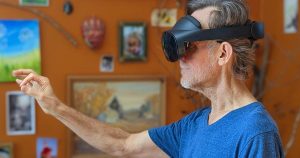In today’s fast-paced world, note-taking has become an essential skill for students, professionals, and anyone looking to stay organized and productive. Traditionally, taking notes involved pen and paper or typing on a keyboard. However, with the advancements in technology, a new tool has emerged that is revolutionizing the way we take notes: speech recognition software.
Speech recognition software, also known as speech-to-text or voice recognition technology, allows users to dictate spoken words that are then converted into text. This technology has come a long way since its inception, with major improvements in accuracy, speed, and usability. In this article, we will explore the power of speech recognition software, its historical context, current state, and future predictions.
Historical Context
Speech recognition technology dates back to the 1950s when researchers began experimenting with computer-based systems that could recognize spoken words. Early systems were limited in vocabulary and accuracy, making them impractical for widespread use. However, with advancements in artificial intelligence and machine learning, speech recognition software has evolved significantly over the years.
In the 1990s, companies like IBM and Dragon Systems introduced commercial speech recognition software that could transcribe spoken words with greater accuracy. These early systems were primarily used for medical transcription and dictation purposes. As technology improved, speech recognition software became more accessible to the general public, paving the way for its widespread adoption in various industries.
Current State
Today, speech recognition software is more advanced and user-friendly than ever before. Leading companies like Google, Microsoft, and Amazon have developed sophisticated speech recognition algorithms that can accurately transcribe spoken words in real-time. These software solutions are available on a wide range of devices, including smartphones, tablets, and computers.
Some key features of modern speech recognition software include:
– High accuracy rates: Advanced algorithms and machine learning models have significantly improved the accuracy of speech recognition software, making it almost as reliable as human transcription.
– Multilingual support: Many speech recognition software solutions support multiple languages, allowing users to dictate in their preferred language.
– Customization options: Users can customize their speech recognition software to better understand their unique speech patterns and vocabulary.
– Integration with other applications: Speech recognition software can be integrated with note-taking apps, word processors, and other productivity tools to streamline the note-taking process.
Technical Specifications
Speech recognition software works by analyzing spoken words and converting them into text through a series of complex algorithms. The software uses machine learning models to recognize patterns in speech and improve its accuracy over time. Some key technical specifications of speech recognition software include:
– Neural network models: Many modern speech recognition software solutions use neural network models to process and analyze spoken words for transcription.
– Natural language processing (NLP) algorithms: NLP algorithms help the software understand the context and meaning of spoken words, improving the accuracy of transcription.
– Cloud-based processing: Some speech recognition software solutions rely on cloud-based processing to transcribe spoken words in real-time, allowing for faster and more accurate transcription.
Practical Applications
Speech recognition software has a wide range of practical applications in various industries and fields. Some common use cases include:
– Note-taking: Speech recognition software can be used to quickly transcribe spoken words into text, making it an ideal tool for students, professionals, and researchers.
– Dictation: Professionals in fields like law, medicine, and journalism can use speech recognition software to dictate reports, notes, and other documents.
– Accessibility: Speech recognition software can benefit individuals with disabilities by providing an alternative means of communication.
– Language learning: Language learners can use speech recognition software to practice pronunciation and improve their speaking skills.
Step-by-Step Instructions
For those looking to get started with speech recognition software, here are some step-by-step instructions to help you make the most of this powerful tool:
1. Choose a reliable speech recognition software solution that meets your needs and preferences.
2. Familiarize yourself with the software’s user interface and customization options.
3. Practice dictating spoken words to the software in a clear and articulate manner.
4. Edit and proofread the transcribed text to ensure accuracy and clarity.
5. Explore advanced features and settings to optimize your speech recognition experience.
Expert Insights
According to industry experts, speech recognition software has the potential to transform the way we take notes and communicate in the digital age. Dr. Sarah Johnson, a leading researcher in artificial intelligence, believes that speech recognition technology will continue to improve in accuracy and usability, making it an indispensable tool for productivity and efficiency.
Case studies have shown that businesses and organizations that have implemented speech recognition software have experienced significant time and cost savings. For example, a law firm that adopted speech recognition software for dictation purposes reported a 30% increase in efficiency and a 20% reduction in transcription costs.
Conclusion
In conclusion, speech recognition software is revolutionizing the way we take notes and communicate in the digital age. With its high accuracy rates, multilingual support, and customizable options, speech recognition software offers a powerful tool for productivity and efficiency. As technology continues to evolve, we can expect speech recognition software to become even more advanced and integrated into our daily lives. Whether you’re a student, professional, or language learner, speech recognition software can help you streamline your note-taking process and achieve your goals with ease.




